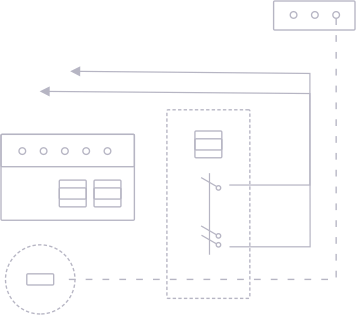Our Gold Coast Electricians Are Certified To Do Electrical Installations In Hazardous Work Areas
Industrial Power and Automation is certified to do hazardous area electrical installations and maintenance work throughout the Gold Coast. We offer hazardous area electrical services to a range of industries. Contact us today for more information on how we can help you.
A hazardous area is where there is a danger of an explosion or fire occurring wherever flammable or combustible substances in the form of gas, vapour, dust, fibres, or flyings are located. In hazardous areas, the possibility of an ignition source must be eliminated or limited, this includes electrical equipment as an ignition source. Electrical equipment associated with a hazardous area must be a suitable type and installed and maintained correctly.
Special precautions are required for the construction, installation, and use of potential ignition sources, as fire and explosion can result in catastrophic consequences for people and property.
A hazardous area classification is required to assess the risk of fire and explosion where flammable liquids, vapours, gases, or combustible dusts are used, stored, handled, or generated. Any person with management or control of an installation with an explosive atmosphere risk is legally responsible for ensuring such a classification has been made.
Where electrical equipment is located within a hazardous area classification zone, specific requirements are mandated in AS/NZS 60079.14 design selection, erection, and initial inspection for the selection and installation of the electrical equipment.
Wanting a hazardous electrician in Brisbane and surrounding locations? Visit our Brisbane hazardous areas page.
In order to achieve hazardous areas compliance, a number of steps must be followed:
Classification
The first step is to engage a competent person to complete a hazardous area classification to identify where explosive atmospheres are likely to occur continuously, in normal operation, or in expected abnormal operation.
A Hazardous Area classification will identify the following information:
Area Classification
Hazardous areas are classified into zones, and these zones are based on the frequency of the appearance of an explosive atmosphere and its duration. Detailed in the table below:
| Zone 0 | Area in which an explosive gas-air mixture is continuously present or present for long periods. | Zone 20 | Area in which an explosive dust-air mixture is continuously present or present for long periods. |
| Zone 1 | Area in which an explosive gas-air mixture is likely to occur for short periods in normal operation. | Zone 21 | Combustible or conductive dusts are present and are likely to occur for short periods in normal operation. |
| Zone 2 | Area in which an explosive gas-air mixture is not likely to occur, and if it occurs it will only exist for a very short time due to an abnormal condition. | Zone 22 | Area in which an explosive dust mixture is not likely to occur, and if it occurs it will only exist for a very short time due to an abnormal condition. |
Gas, Vapour, or Combustible Dust Group
Gas, vapours, or dust are divided into three groups, as detailed in the table below:
| Mining | Explosive Gas Atmosphere | Explosive Dust Atmosphere | |||
M1 | M2 | Sub-Division | Ignition Energy | Sub-Division | Explosive Atmosphere |
| IIA | 260 Micro-joules | IIIA | Combustible flyings | ||
| IIB | 95 Micro-joules | IIIB | Non-conductive dust | ||
| IIC | 18 Micro-joules | IIIC | Conductive dust | ||
The temperature rating or ignition temperature
of the hazard
All hazardous materials have what is known as an ‘Ignition Temperature’, this is the minimum temperature at which the hazardous material, when mixed with air will ignite and sustain combustion, without an ignition source.
The IP rating of the apparatus
During classification, a risked based approach of consequences of an explosion, can be used to determine if equipment used can be of a higher or lower level of protection, beyond the nominally used zone equipment selection criteria.
The competent person will provide a report detailing the classification methodology and decisions made to arrive at the zones required, and drawings identifying the zones for the electrical installer.
Hazardous Area Equipment Selection, Installation,
and Initial Inspection
The electrical equipment to be installed in the hazardous areas needs to be suitable for the Area Classification, Equipment Group, Temperature Class, and IP rating set out in the Classification Report.
The equipment needs to be installed by a competent person licensed to work with Ex-Rated Equipment. Our experienced electricians are certified to do hazardous area electrical installations and maintenance work and have experience with several projects, including Protein Blending Factories, Powder Blending, Grain Silos, and Fuel Stations.
Before equipment in a hazardous area can be initially energised, an initial inspection needs to be completed according to AS/NZS 60079.14 by a competent inspector.
Hazardous Area Verification Dossier
The Hazardous Area Classification Report, details of the selected electrical equipment, and installation need to be recorded in a Hazardous Area Verification Dossier. This dossier must be kept on-site and updated over the life of the hazardous area installation.
Hazardous Area Maintenance and Inspections
The equipment in a hazardous area needs to be maintained in accordance with AS/NZS 60079.14, including periodic inspection by a competent person.


Why Choose Us For Your Electrical Installations In Hazardous Areas
We are an Industrial and Commercial electrical contracting company who specialises in electrical installations in hazardous areas. With our extensive knowledge and experience, you can count on us to provide your business with a comprehensive solution.
Our electricians are certified to do hazardous area electrical installations and maintenance work and have experience with several projects, including Protein Blending Factories, Powder Blending, Grain Silos, and Fuel Stations. You can rest assured that with our comprehensive service, your equipment will meet electrical safety standards.











